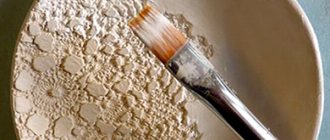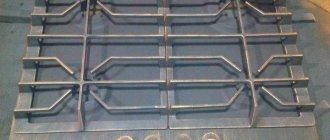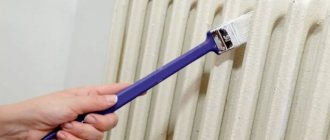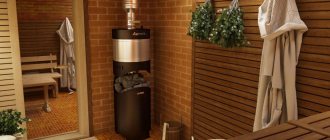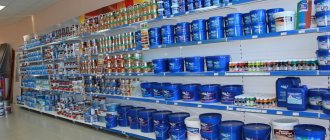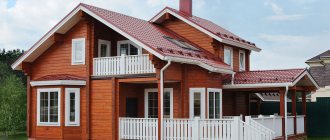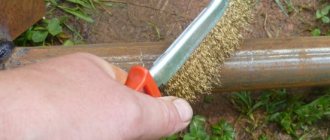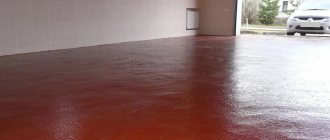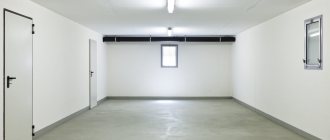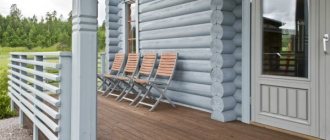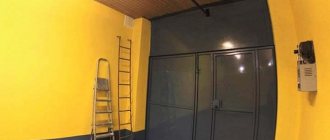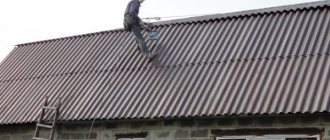We invite you to familiarize yourself with the recommendations on how to how to restore garden figures, done made of plaster and polystone.
We, as a manufacturing company, know all the secrets and features of manufacturing such products, so we can give professional advice on how to update, repair, and also what and how to paint.
Let us clarify that our services do not include the restoration of plaster figures, since the price of their repair is comparable to the purchase of a new figurine. But you can do it with your own hands on a free summer evening.
So, you have decorated your site with beautiful figures. However, after 1-2 years the original gloss was lost, the paint peeled off, and cracks appeared. In this article we will tell you how to restore damaged figurines, and also give recommendations on proper installation and care to extend the “life” of landscape decorations.
Rules for choosing and types of paints for garden figures
Garden decor can be made from different materials, so the properties and operating standards of the products vary. In addition, even figurines of the same composition serve differently depending on environmental conditions. Those products that stand in direct sunlight or in a damp area and regularly interact with precipitation require more serious protection than those located in the shade.
The most durable are considered to be garden figures made of natural stone or artificial material - polystone. They hold the paintwork for a long time and rarely need to be renewed. Plaster and cement figures can quickly fade, and some types of paint on them even crack and peel after just a couple of months of use. Products made of gypsum without additional protection from moisture can get wet and crumble, so the paint for them must be moisture resistant.
Polystone garden sculpture
Professionals give the following recommendations on choosing paint for garden figurines:
- Oil-based coatings should not be used for gypsum products. They form an airtight film, which has a detrimental effect on the base material. It is better to treat cement figures with an alcoholic rosin solution before painting with oil paints.
- Water-based acrylic or latex compounds work well. They fade slowly, are not prone to abrasion, protect products from atmospheric moisture and are inexpensive.
- Coatings made from facade paints - polymer, epoxy, vinyl, acrylic-silicone - look great on plaster and cement figures. Such materials have high weather resistance, retain color for a long time, do not fade and are not at all afraid of moisture. They have only one drawback - the high price.
- If you want to give the figures the effect of aged stone, you can not paint them, but treat them with drying oil or shellac. To imitate a wax surface, a mixture of gasoline or turpentine with wax is applied to the figures, and after drying they are thoroughly polished.
Silicone acrylic facade paint Marshall Akrikor
In addition to the above paints, minium can be used to cover garden figures - a paintwork material with a natural pigment that has a rich red-brown color. To obtain the gilding effect, gold leaf is used, and varnishes for exterior use are used to protect against moisture and give a beautiful shine. If the figures are made by hand, the paint must be applied immediately to a fresh product, and then periodically soak the surface with primers.
Methods for making plaster sculptures
If you are not a professional sculptor, it makes sense to start working with plaster by making sculptures using the molding method. This technology involves obtaining finished products by pouring gypsum mortar into molds. Molding is a very simple way to create sculptures, which is suitable even for children's creativity. For children under 12 years of age, creative activities must be conducted by an adult. An alternative way to make a sculpture from plaster is to model the desired figure from diluted plaster on a frame. It is convenient to use a variety of spatulas and other tools in the work. What sculptures can you make from plaster with your own hands? The frozen material is quite porous and fragile. But despite this, it can be used to make outdoor sculpture. Plaster is ideal for creating interior elements and decorative figures. If you are just starting to work with this material, try doing something small and simple in shape for the first time. Gradually improving your skills, you will learn to create real masterpieces from plaster.
Preparing for painting
The design of the figurine and the specific colors of its parts are determined in advance. Depending on this, the required amount of paint is acquired and tinted in certain shades. As a rule, paints of white, black, and beige colors are consumed more, so they are usually purchased in larger quantities.
White paintwork materials in diluted form can additionally be used as a primer. Also, for painting figures, prepare a brush, a small roller, and for a large volume of work, a spray gun or a regular spray gun. To draw small details you will need a small brush. Instead of a roller, you can use a sponge or cotton wool or gauze swab.
Restoration of a garden sculpture made of concrete
Often, upon closer inspection, cracks are revealed in old figures. To seal them, you will need putty for external use. The broken parts are glued to liquid nails or any reliable glue, but painting begins no earlier than after 12 hours. The layer of cracked old paint is removed with sandpaper, the figure is sanded well until smooth and a primer is applied in 1-2 layers.
How to dilute plaster
The instructions for diluting gypsum, indicated on the packaging with the material, outline all the features of preparing the composition. It is important to dilute the mixture with a reserve of approximately 0.5 liters, which will allow you to quickly correct voids that may form during the pouring process .
The main stages of preparing the gypsum mixture:
- For casting, a solution with the consistency of liquid sour cream is required, and therefore water and plaster are diluted in a 1:1 ratio. In this case, you should add gypsum powder to water, and not vice versa. The bulk substance is poured into the liquid in a thin stream, stirring with a spatula. Large volumes are best stirred with a construction mixer or by hand.
- After removing all lumps and mixing, the mixture can be used for its intended purpose by pouring into the prepared form.
- Complete drying of the product is achieved after at least 24 hours, but the period depends on the size of the craft . It is best to keep it for about two days.
- The product is removed from the mold, the necessary parts are glued together and, if necessary, the voids are corrected. To do this, make a thick solution of gypsum with water in a ratio of 2:1, respectively.
Video: preparing gypsum mortar
The order of painting the figures
Painting is carried out in a well-ventilated area. Most often, the figurine is painted white as the first layer, so that colored paintwork materials look brighter and more saturated. This technique will further reduce the absorption of gypsum and cement and reduce the consumption of pigmented paint. Afterwards, the material is allowed to dry and a drawing is applied with a pencil to the surface of the figure. Then paint all the details; if necessary, outline the contours in a dark tone. Leave the figure until completely dry for a day and place it in its proper place.
How to strengthen plaster
If plaster figures are used in the garden, it is recommended to use additional products to increase their strength. This is especially important if the products were prepared independently, since in this case industrial hardeners and special modifiers are unlikely to be added to them. Before painting, you can treat the figurine with a solution of 500 ml of water and 50 g of PVA glue, which acts as a reliable primer. No less effective will be the use of ready-made acrylic primer and the application of varnish after painting. It is best to buy weather-resistant yacht varnish on a silicone or polyurethane base with a gloss or pleasant matte finish.
Bronze painting of figurines
The easiest way is to purchase a ready-made composition with a bronze tint, which is used immediately after the base white coating has dried. A cheaper option is to apply nitro varnish with silver or gold pigment, which is sold in dry form. This composition is applied in 2-3 layers, otherwise it will turn out too transparent.
Features of installation of gypsum stucco molding
If you decide to install gypsum stucco yourself, you should have not only special tools at hand, but also detailed step-by-step instructions. In addition, before starting work, you should familiarize yourself with all the features of fastening decorative elements:
- Installation of gypsum stucco molding should be carried out in a room that is in the first stage of renovation. Working with plaster means the formation of a large amount of corrosive fine dust, which can ruin surfaces that have already been completely repaired.
- Moldings are attached to already leveled and puttied surfaces without final finishing.
- Decorative elements made of gypsum are well attached to concrete, plasterboard and plastered walls. Difficulties will arise when installing them on wooden walls. The fact is that gypsum and wood differ in their expansion coefficient and after hardening the element may fail or a crack may form.
- When installing stucco molding on plasterboard walls, they should definitely be strengthened, since the decor weighs a lot.
- Light stucco elements are attached to the walls using a special mixture prepared from water, soft plaster and PVA glue. For large decorations, galvanized screws are used.
To attach large elements of gypsum stucco to a wall or ceiling, you will need galvanized screws and a screwdriver
Caring for painted figurines
After painting, garden figurines need proper care, otherwise the renewed coating will not last long. The main recommendations are:
- regularly brush off dust and dirt from the figures with a soft cloth or sponge;
- treat them with an antifungal compound a couple of times a season;
- periodically renew the protective varnish layer;
- For the winter, do not forget to put the figures in the storage room.
Garden figurines are an interesting, practical and durable way to decorate your home area. With regular painting and care, they will last for many years and will not deteriorate from the harmful effects of precipitation and sunlight.
Crafts for home
You can also make crafts from plaster to decorate your home. Miniature figurines on a book shelf, sets of fairy-tale or cartoon characters for children will complement the interior of the living room.
For lovers of indoor flowers, you can make original pots for small sedums, decorative dracaenas or a bright Christmas star.
Crafts for the New Year
New Year's crafts made from plaster will help you decorate your home in an interesting way on the eve of the holiday. These can be beautiful stars, balls or snow houses, painted in a variety of shades.
Working together with a child will please everyone: both children and parents. And the bright colors and shine of the New Year's toy will lift your spirits.
